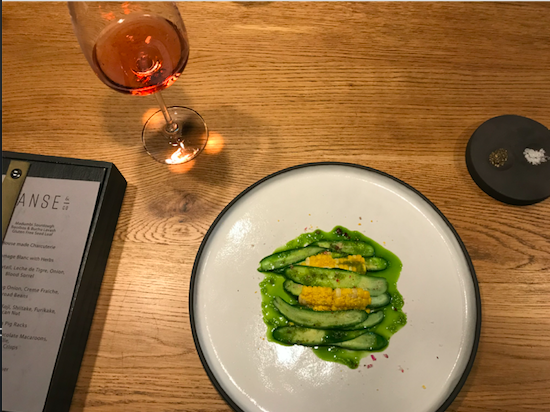International Carménère Day, November 24, is a celebration of the Chilean wine varietal thought to be extinct until it was rediscovered in 1994. Known as the ‘Lost Child of Bordeaux’, Carménère was one of the original six red varieties used in the blends of Bordeaux, along with the famous five—cabernet sauvignon, cabernet franc, merlot, malbec and petit verdot.
View this post on Instagram
Lozärn Wines on Doornbosch farm in the Robertson region is the king of carménère in South Africa.
Rewind to 2012, winemaker Salóme Buys-Vermeulen was enjoying a fine Chilean carménère with husband, Sybrand and a friend. She says it “was love at first sip”. This moment led to her planting a carménère vineyard in 2014. From this block Lozärn Wines produced the first single-varietal carménère in South Africa.
On Saturday November 23, the day before International Carménère Day, I attended an early celebration at Janse & Co, with winemaker Salóme Buys-Vermeulen. The afternoon was chilly but we soon warmed up after a welcome glass of delicious sauvignon blanc.
Glass in hand, I ambled around the fine dining institution that is Janse and Co. The dark interior oozes sophistication. There is an air to this restaurant that is unpretentious, homely and suave. The courtyard is covered in a canopy of granadilla vines. This combined with the hydroponic vegetable garden makes you forget you’re in the city.

Wandering back inside, we took our seats. The delicious Lozärn Carménère Rosé accompanied my new glass. Having a pallet for all things pink, this wine was a flavour burst like no other. The subtle, softness of the wine made it almost too easy to drink.
My lonely glass was quickly topped up, just in time for the house made charcuterie board. Unlike any range of cheeses and breads I have ever tried, the Janse & Co version was out of this world. From gluten-free seeded bread, to madumbi sourdough and rooibos and buchu lavash – it was difficult not to over indulge. This paired with the fromage blanc with herbs, I was in cheese heaven.

Next on the menu was a corn and cucumber dish, with pelargonium and fig leaf. It disappeared off my plate in a flash.

Soon after my meal disappeared, mains arrived. Paired along side the single-varietal Carménère was a vegetarian meal from heaven. I have never in my life appreciated asparagus as much as with this main course. Accompanying my dish was pak choi, black koji, shiitake, furikake and peacan nuts. Again, my meal seemingly disappeared.
Only 2 000 bottles of the Carménère 2017 have been produced. Redolent with cherry and purple plum notes, the profile deepens into darker fruit on the palate with mulberries and blackcurrant with soft, fine tannins. “The flavour of choc-mocha it develops from the wood contact is just exquisite,” says Salòme.
The day ended off on a sweet note, with fennel and white chocolate macaroons, mango curry pastilles and beetroot and black pepper crisps. The hard work of winemaker Salòme and the ingenuity of Janse & Co captured how quintessentially unique the Carménère varietal really is.

The estate launched their single-varietal carménère 2016 in December 2017, with just 100 bottles, alongside a 100 per cent Carménère Rosé 2017. To purchase their wine, visit the site here.
Picture: Imogen Searra

